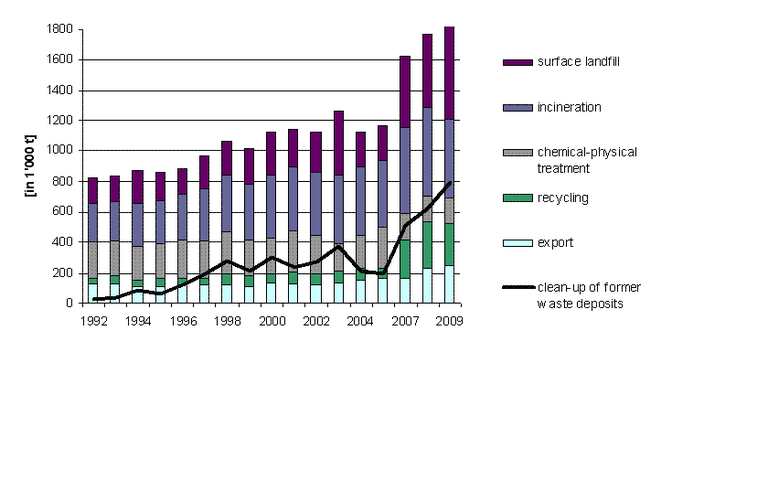Published: 26 Nov 2010
Modified: 17 Feb 2025
Total waste arising has increased steadily since 1998. Growth has been around 12.5 % since 2002, from 17.2 million tonnes to 19.4 million tonnes in 2009. There has been an increase in all waste types, including construction waste, solid municipal waste, hazardous waste and sewage sludge. On the other hand, waste management in Switzerland has improved. Construction waste, totalling 12 million tonnes, is Switzerland’s largest waste fraction. About 80 % of this fraction is recycled. Switzerland’s municipal solid waste, the second largest fraction, amounted to 700 kg per person in 2009. No municipal solid waste was consigned to landfill in 2009. In 2009, 51 % of the total municipal waste was collected separately and recycled, compared to 45 % in 2000. With a recycling ratio of 95 % of glass, 91 % of aluminium, 84 % of tinplate, 88 % of paper and cardboard, 81 % of PET and 71 % of batteries. No doubt, Switzerland achieves very high recycling ratios. On the other hand there is a new challenge of growing importance to solve, the so called “litter”, when items are being carelessly dropped or not picked up. The quantity of Swiss hazardous waste was about 1.8 million tonnes in that year. Approximately 0.5 million tonnes were incinerated, 0.7 million tonnes were consigned to surface landfill, 0.4 million tonnes were recycled and the rest was consigned to chemical-physical treatment. Besides the hazardous waste resulting from production processes a considerable part is due to environmental protection measurement such as waste treatment or remediation of contaminated sites. Switzerland has registered around 4000 polluted sites which in the short or long term pose a hazard to human health and the environment through the release of harmful substances. The remediation of these sites must be completed by 2025. The waste excavated from these sites and treated in appropriate facilities strongly affects the generation of hazardous waste as it contributes more than 40 % of the total amount.
Development of total waste arising in Switzerland

Development of recycling ratio of solid municipal waste per inhabitant in Switzerland

Swiss recycling ratios for different fractions

Development of hazardous waste management and hazardous waste from the remediation of contaminated sites in Switzerland

Document Actions
Share with others